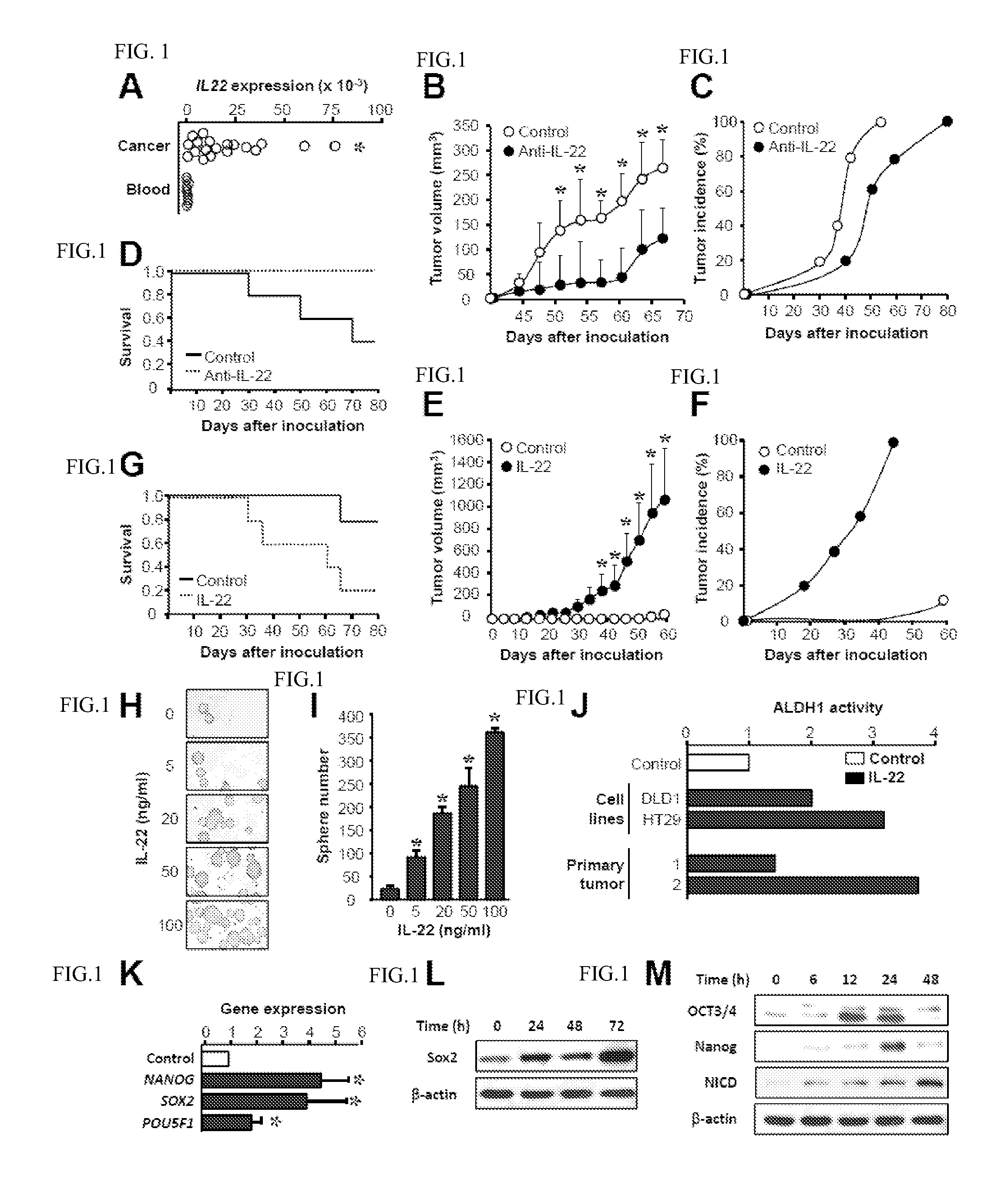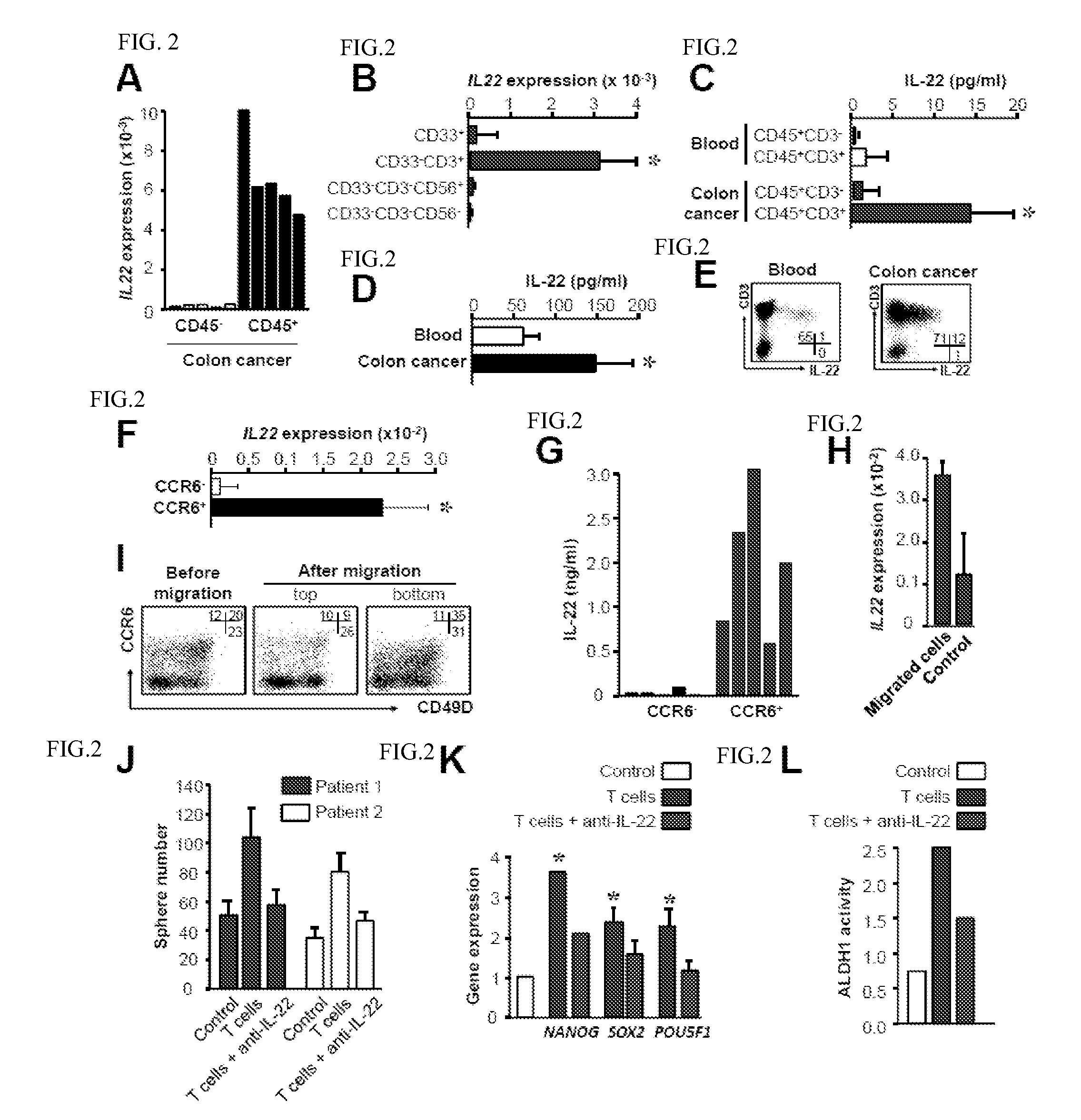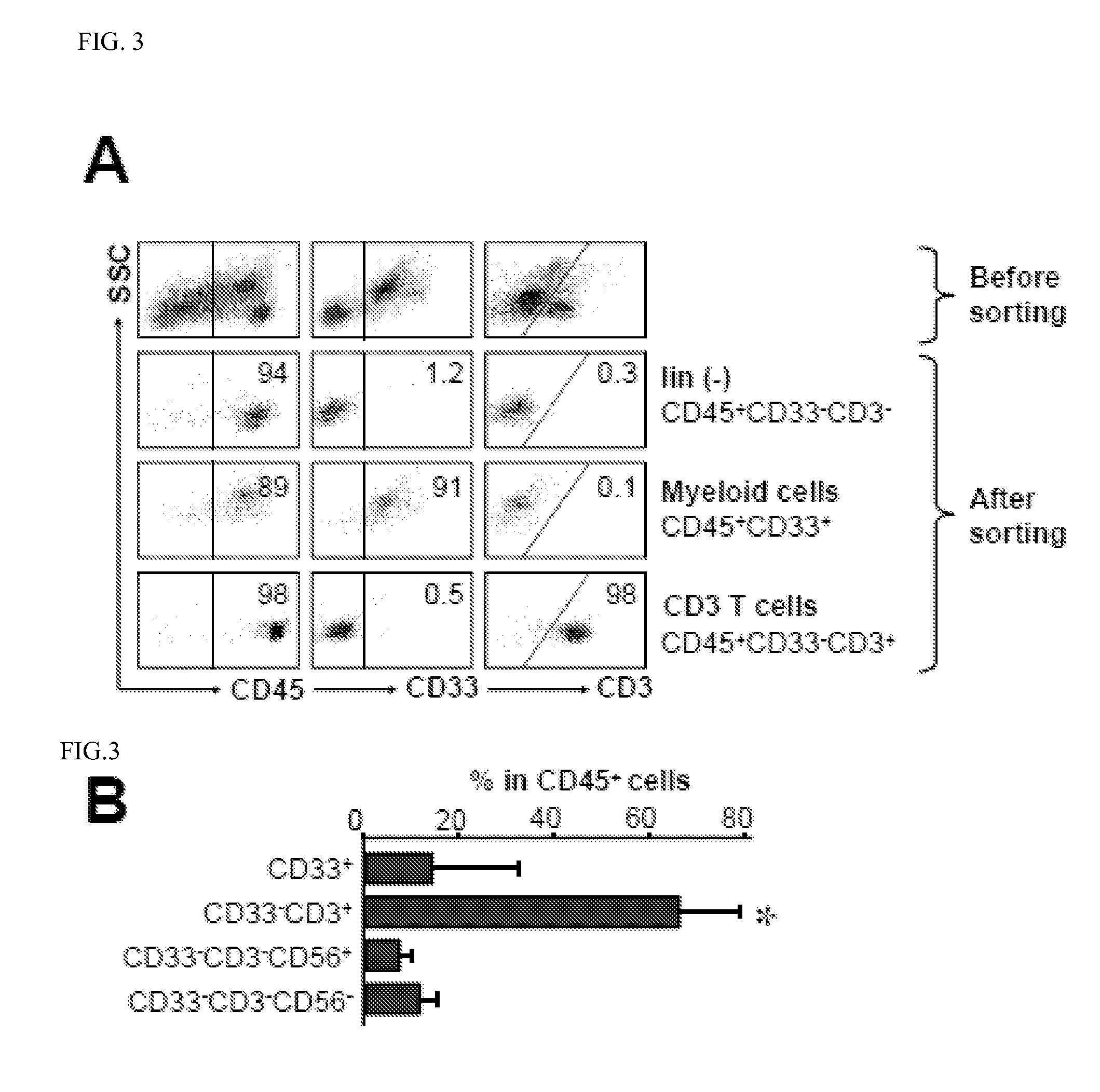Compositions and methods for detecting and treating colorectal cancer
a colorectal cancer and colorectal cancer technology, applied in the field of colorectal cancer compositions and methods, can solve the problems of poor survival rate among colon cancer patients, and achieve the effects of improving the survival rate, reducing the risk of colon cancer patients, and improving the survival ra
- Summary
- Abstract
- Description
- Claims
- Application Information
AI Technical Summary
Benefits of technology
Problems solved by technology
Method used
Image
Examples
example i
[0218]This example demonstrates that IL-22 in the tumor environment promotes colon cancer sternness.
[0219]As IL-22 protects intestinal stem cells from immune-mediated tissue damage in mice (see, e.g., Hanash, A. M. et al. (2012) Immunity 37, 339-350), it was hypothesized that IL-22+ cells might support cancer sternness in patients with colon cancer. High levels of IL-22 mRNA were initially detected in primary colon cancer tissues as compared to peripheral blood (FIG. 1A). The effects of endogenous IL-22 on primary tumor formation in a female NOD / Shi-scid / IL-2Rγnull (NSG) mouse model (see, e.g., Curiel, T. J. et al. (2004) Nat Med 10, 942-949; Kryczek, I. et al. (2012) Int J Cancer 130, 29-39; Kryczek, I., et al. (2011) Sci Transl Med 3, 104ra100; Zou, W., et al. (1997) J Virol 71, 1227-1236) were next examined. To this end, single cell suspensions were made from fresh colon cancer tissues. These cells were equally divided into two groups and injected into NSG mice with one-time trea...
example ii
[0222]This example demonstrates that Th22 cells are recruited into the tumor and promote cancer sternness via IL-22.
[0223]Given that IL-22 promotes colon cancer sternness, the cellular source of IL-22 and the phenotype of IL-22+ cells in the human colon cancer environment were examined. Real-time PCR revealed that IL-22 was expressed by CD45+ immune cells in the colon cancer environment (FIG. 2A). Based on polychromatic flow cytometry analysis (FIG. 3A), CD3+ T cells were the major immune component in the colon cancer CD45+ cells (FIG. 3B). To further define the phenotype of the IL-22+ cells, colon cancer associated CD45+ immune cells were sorted into four populations, lineage negative cells (lin−), CD33−CD3−CD56+ cells (potential NK / ILCs), CD33+ myeloid cells and CD3+ T cells. It was found that IL-22 mRNA expression was confined to the CD3+ T cells (FIG. 2B). Furthermore, sorted colon cancer associated CD45+CD3+ T cells, but not colon CD45+CD3− and blood CD45+ CD3− cells, spontaneo...
example iii
[0227]This example demonstrates that IL-22 promotes colon cancer sternness via STAT3 activation.
[0228]The molecular mechanisms by which IL-22 promotes colon cancer stemness was next investigated. STAT3 plays a key role in the crosstalk between cancer and immune cells in the tumor microenvironment (see, e.g., Lee, H., et al. (2009) Cancer Cell 15, 283-293; Yu, H., et al. (2007) Nat Rev Immunol 7, 41-51). In line with previous reports (see, e.g., Lejeune, D. et al. (2002) J Biol Chem 277, 33676-33682; Pickert, G., et al. (2009) J Exp Med 206, 1465-1472), it was observed that IL-22 activated STAT3 in colon cancer cells (FIG. 6A). The effect of IL-22 on sternness was STAT3 dependent as STAT3 knockdown (sh-STAT3) (FIG. 7) resulted in reduced colon cancer sphere numbers (FIG. 6B, C) and core stem cell gene expression (FIG. 6D-F). It was speculated that STAT3 may directly bind to the promoters of core stem cell genes and subsequently induce their expression. Chromatin immunoprecipitation (...
PUM
| Property | Measurement | Unit |
|---|---|---|
| weight loss | aaaaa | aaaaa |
| CT | aaaaa | aaaaa |
| PET | aaaaa | aaaaa |
Abstract
Description
Claims
Application Information
 Login to View More
Login to View More - R&D
- Intellectual Property
- Life Sciences
- Materials
- Tech Scout
- Unparalleled Data Quality
- Higher Quality Content
- 60% Fewer Hallucinations
Browse by: Latest US Patents, China's latest patents, Technical Efficacy Thesaurus, Application Domain, Technology Topic, Popular Technical Reports.
© 2025 PatSnap. All rights reserved.Legal|Privacy policy|Modern Slavery Act Transparency Statement|Sitemap|About US| Contact US: help@patsnap.com



